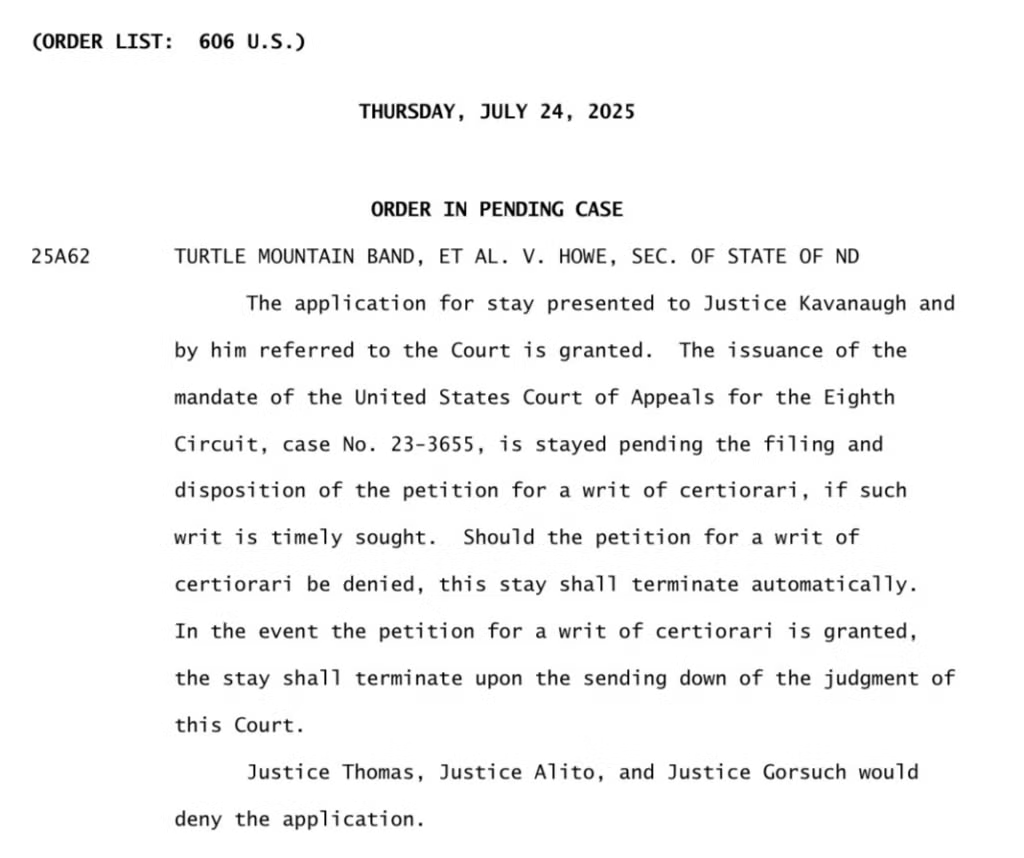Earlier today, Rick Pildes flagged the Court’s inexplicable month-long delay in issuing a re-argument order in Louisiana v. Callais, last Term’s—and now next Term’s—major Shaw case. I agree with Pildes’s concerns and want to add a few points.
First, to further speculate, it is possible the Court wants to pair Callais with a Section 2 case. Indeed, the Alabama redistricting case—known to blog readers as Allen v. Milligan—is heading back to the Court soon. Recall that in May the three-judge district court found that Alabama’s 2023 redistricting plan was enacted with discriminatory intent. Coincidentally(?), Alabama filed its notice of appeal from that injunction on June 6, 2025. That notice of appeal is available on the district court docket, but I have been unable to locate a jurisdictional statement on the Supreme Court’s electronic docket. There’s also a bail-in hearing in Milligan scheduled for this Tuesday—about which I will have a preview post on Monday. This would further raise the stakes in Milligan. And if we add the Eighth Circuit implied cause of action/Section 1983 case to the docket, the October 2025 Term could be a monumental one for voting rights.
Second, assuming that the Court will order supplemental briefing, this case could be delayed well into the fall. Of course, supplemental briefs might be on a shorter timetable than normal merits briefs. But it seems counter-productive to push a case that proved impossible for the Court to decide in one Term even deeper into the next.
Third, I want to highlight something odd about Justice Thomas’s dissent from the Court postponing the case to next Term. Characteristically, he calls for a complete re-assessment of the Court’s voting rights jurisprudence and lambasts Section 2 of the VRA. What is striking is the complete absence of his change-of-face in his Alexander concurrence from 2024. Indeed, he doesn’t even cite it. If, as Thomas claimed in Alexander, racial gerrymandering claims are non-justiciable political questions, then Callais seem like an odd vehicle to invalidate Section 2 of the VRA. Moreover, Thomas’s questions at the Callais oral argument memory-holed the Alexander concurrence. I’ve previously written about how Thomas failed to reconcile his new position on Shaw claims with the VRA’s constitutionality, and his Callais dissent only raises more questions.
